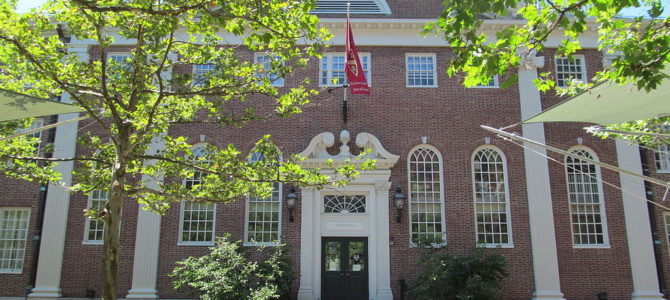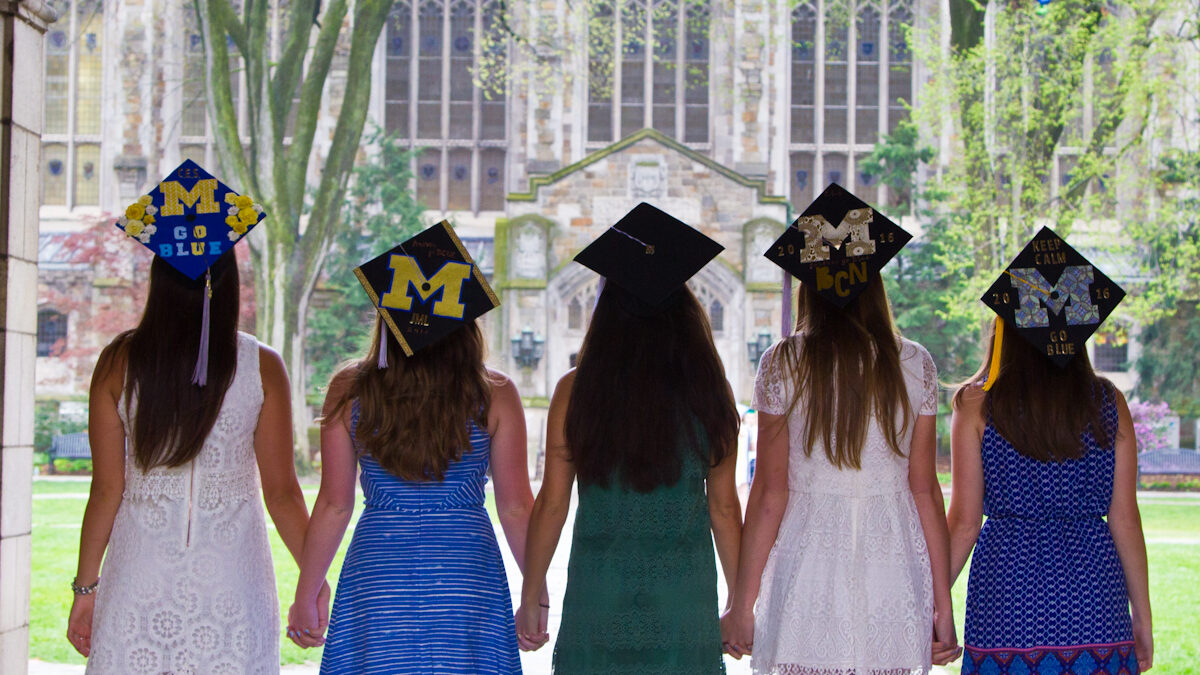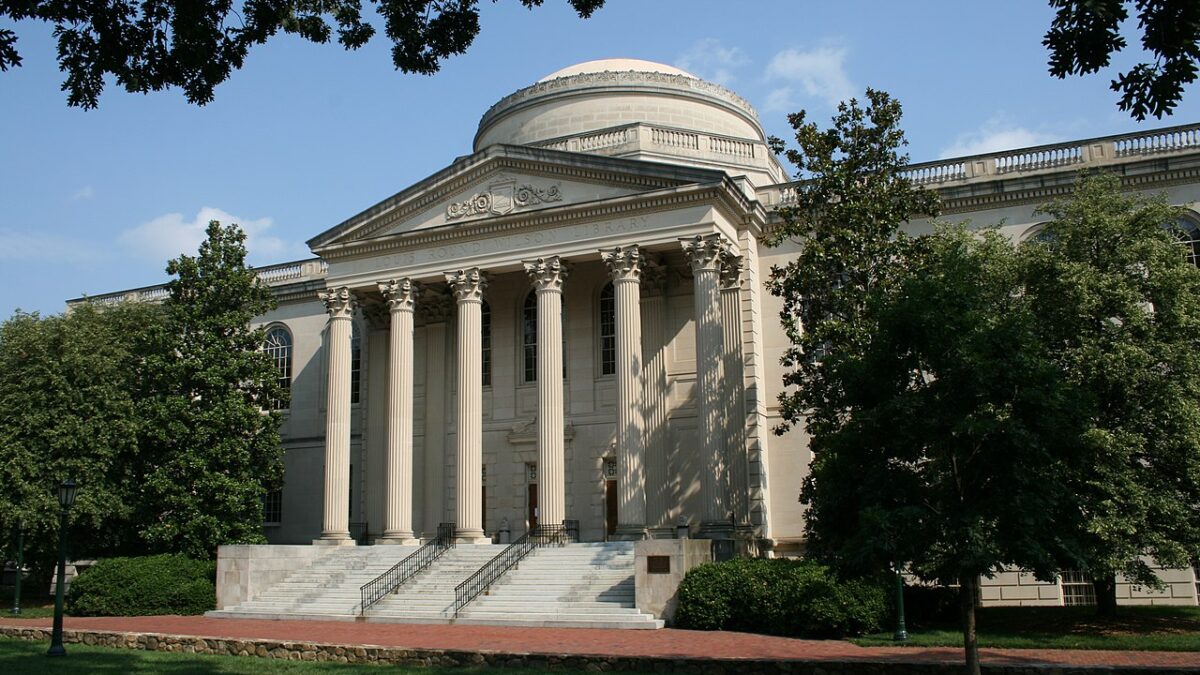
Federal Judge Allison Burroughs ruled this week that Harvard University’s affirmative action approach to college admissions does not discriminate against Asian American applicants.
The nonprofit Students for Fair Admissions (SFFA) brought this case, which alleged the president and fellows of Harvard College violated Title VI of the Civil Rights Act of 1964 by limiting the number of Asian American applicants accepted. Harvard acknowledges that its undergraduate admissions policies consider race as one factor among many, but insists that its use of race is consistent with the law.
Judge Burroughs sided with Harvard. After a close review of her opinion, I found it problematic in several areas.
Harvard Skewed Its Data With Auto-Admits
I question why Burroughs chose Harvard’s statistical analysis over SFFA’s. Both Harvard and SFFA hired renowned economists to perform statistical analysis to support their respective positions. Harvard’s expert, David Card, is an economics professor at the University of California, Berkeley. SFFA’s economist, Peter Arcidiacono, is a professor of labor economics at Duke University.
Burroughs acknowledges that both professors are well qualified, and the two men used almost identical statistical models and methodology. So how did these two highly respected and qualified professors come to fundamentally disagree about whether Asian Americans face discrimination in the Harvard admissions process?
Their disagreement results from what data they included in their analysis. For example, Card, on behalf of Harvard, included ALDCs — applicants who are student athletes, legacies, linked to top Harvard donors, or children of faculty members. Arcidiacono, on behalf of SFFA, didn’t.
Burroughs rejected Arcidiacono’s analysis because she believes ALDCs make up about 30 percent of each Harvard admitted class and thus should be included. But SFFA argues that because ALDC applicants, regardless of race, are granted significant preferences that are not available to most applicants and are thus admitted at higher rates than all the general applicant pool, including ALDCs distorts the data about what admissions is like for people without these advantages. Anyone who has a statistical background will agree with SFFA’s reasoning for excluding ALDCs.
Even Burroughs accepted SFFA’s analysis that among the non-ALDCs, Asian Americans are admitted at a lower rate than white students, with between 5 and 6 percent of Asian Americans and between 7 and 8 percent of white applicants admitted to the classes of 2014 through 2017. She also acknowledged that Asian American applicants “would likely be admitted at a higher rate than applicants of all other racial/ethnic backgrounds if admissions decisions were made based solely on academic and extracurricular ratings.” But in the end, she still preferred Card’s analysis.
Harvard’s Arbitrary ‘Personal Rating’ Relies on Stereotypes
The second problem I have with Burroughs’ ruling is with her characterization of Harvard’s infamous “personal rating.” This is a score an admissions officer assigns to an applicant based on interviews with alumni, application essays, and teacher recommendations. The officer ranks applicants on a scale of one to four, with one the highest and four the lowest score.
Arcidiacono’s analysis shows that Asian Americans in the top academic deciles often received lower “personal ratings” than applicants from other racial groups with similar academic qualifications. The lower “personal rating” dragged down Asian American students’ overall rating and thus reduced their chances of being admitted.
Burroughs was critical of some of the comments from the Harvard’s admissions officers. Examples include comments such as, “He’s quiet and, of course, wants to be a doctor,” or “Applicant seems like a reserved, hard-working, aspiring woman scientist/doctor,” or the applicant is a “classic V.N. [Vietnamese] bootstrap case,” or “a classic BC/NC (blue collar/non-college background) Asian American from the inner-city.” These comments reflected “recurring characterizations of Asian American applicants that were broadly consistent with stereotypes.”
In addition to constantly associating Asian students with adjectives such as “bright,” “hardworking,” “bland,” and “not exciting,” SFFA’s analysis also shows admissions officers are statically more likely to use “standard strong” to describe Asian American applicants, which means “a strong applicant who is nonetheless unlikely to be admitted because he or she is not sufficiently distinguished within Harvard’s exceptional applicant pool.”
Acknowledging that such implied racial bias in the “personal rating” of Asian Americans is evident, Burroughs writes that while “the statistics (SFFA presents) perhaps tell ‘what,’ they do not tell ‘why,’ and here the ‘why’ is critically important.” But to me that “why” had already been answered.
The ‘Proportional Representation’ Argument Is Flawed
Another reasoning in Burroughs’ ruling that really bothers me is her “proportional representation” argument. She states in her opinion that since Asians represent only 6 percent of the U.S. population but close to 24 percent of Harvard’s admitted class, Asian Americans are already overrepresented.
This is the same argument New York City Mayor Bill de Blasio used when he proposed eliminating the Specialized High Schools Admissions Test (SHSAT) and replacing it with a new admissions process based on race, so the student bodies of New York City’s elite public high schools would mirror the city’s population composition and not be dominated by Asian kids. Asian American families and their allies fiercely protested the mayor’s proposal. He recanted it this year after his failed presidential bid.
It’s disappointing that Burroughs used the same logic in deciding the Harvard case. Based on this thinking, Asian Americans are clearly underrepresented in the NBA. Why did no NBA team want to sign Jeremy Lin? Should all NBA teams face lawsuits for not having Asian Americans making up 6 percent of their teams?
It’s illogical to demand every institution and field in our society be the mirror image of the composition of the population. Each one of us has different aspirations, work ethics, and God-given talents. As free people, we choose what we want to do in our lives, and our paths to success aren’t and shouldn’t be merely reflections of how many of us check the same racial or ethnic boxes.
Colleges and universities are unique institutions where academic performance is not everything but plays an important role in a student’s success. When, according to a Princeton paper, Asian American students have to score “140 points higher than a white student, 270 points higher than a Hispanic student and 450 points higher than a black student on the SAT to be on equal footing,” it’s unfair not only to Asian Americans, but also to other minority students.
Diversity Is About More Than Race and Ethnicity
The University of North Carolina, another school SFFA is suing for its race-based college admissions, admitted in a court document that minority students at the school reported “feelings of isolation and unfair pressure to represent their race or ethnicity.” Yet UNC insisted that only by continuing affirmative action could it help minority students overcome such negative feelings.
Schools such as Harvard and UNC try hard to make their freshman class look diverse. But they haven’t done enough to ensure non-Asian minority students are successful once they are admitted. A study shows a wide GPA gap between African American and Hispanic American students and white students in their freshman year. The gap narrowed as more non-Asian minority students moved out of the “difficult” STEM (science, technology, engineering, and math) into “easier” majors such as social studies when they realized their peers were academically better prepared.
Despite more minority students enrolling in colleges and universities, there is still a 14-point graduation gap between white students (64 percent) and non-Asian minority students (50 percent). As Heather MacDonald wrote, “When diversity is engineered through lowered admission standards, any stereotypes that students may have about the academic capacities of various racial groups are confirmed, not refuted.”
I do believe a diverse student body on campus, measured not only by races and ethnicity, but also by life experiences, thoughts, and ideas, is beneficial to everyone involved. But the affirmative action approach, which lowers academic standards for some groups while holding a selected group to unusually high standards, is the wrong way to do it. Rather than “foster the tolerance, acceptance and understanding” environment that Burroughs and other affirmative action supporters hope for, such an approach creates racial tensions among different ethnic groups and does a disservice to all students, and especially all minority students.
Ironically, college campuses today are among the least tolerant places for diversity of ideas. I hope SFFA takes its case against Harvard to the Supreme Court. In this country where everyone is created equal, we need a color-blind college admission process. No one should be penalized or rewarded because of the color of his skin.









